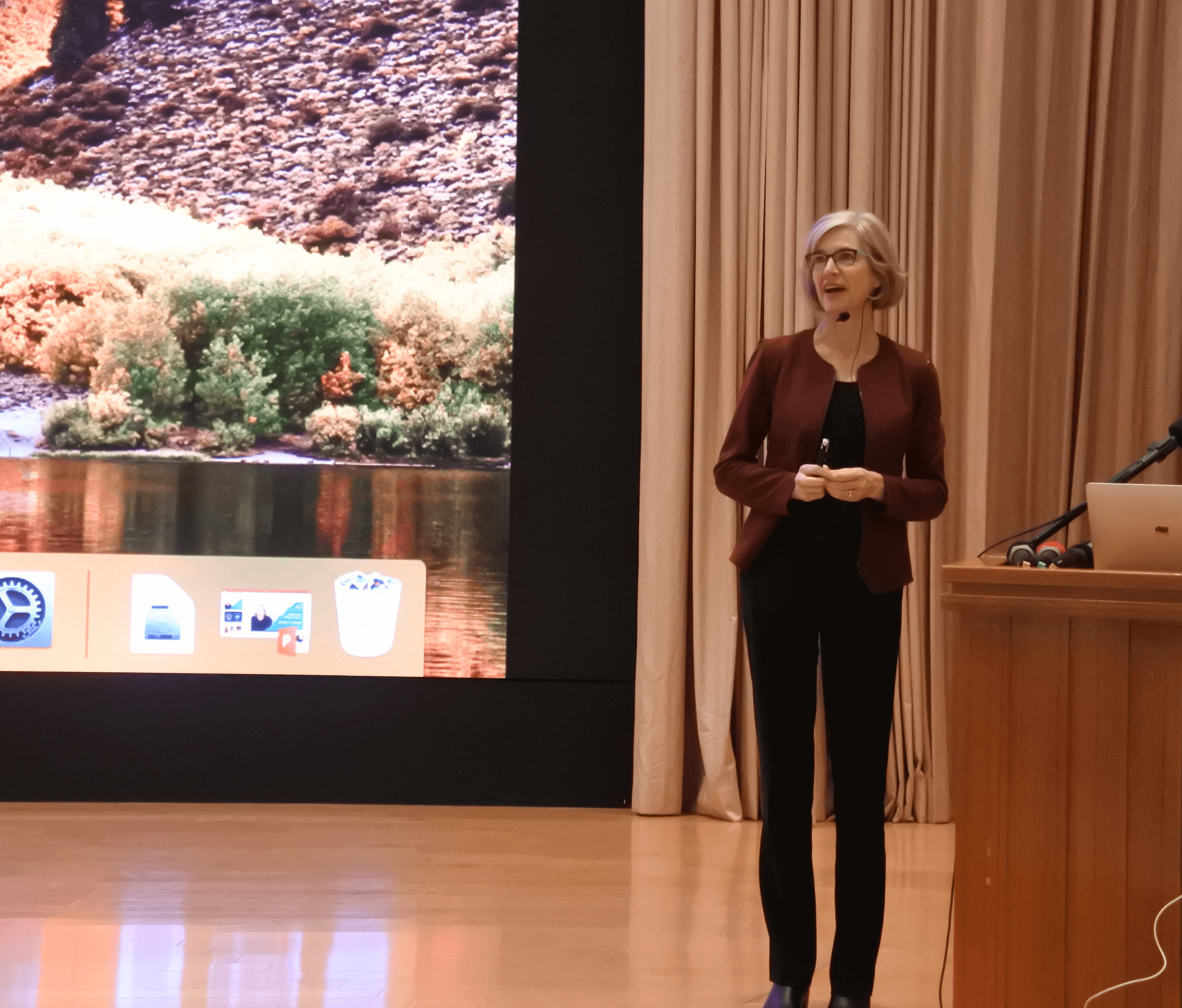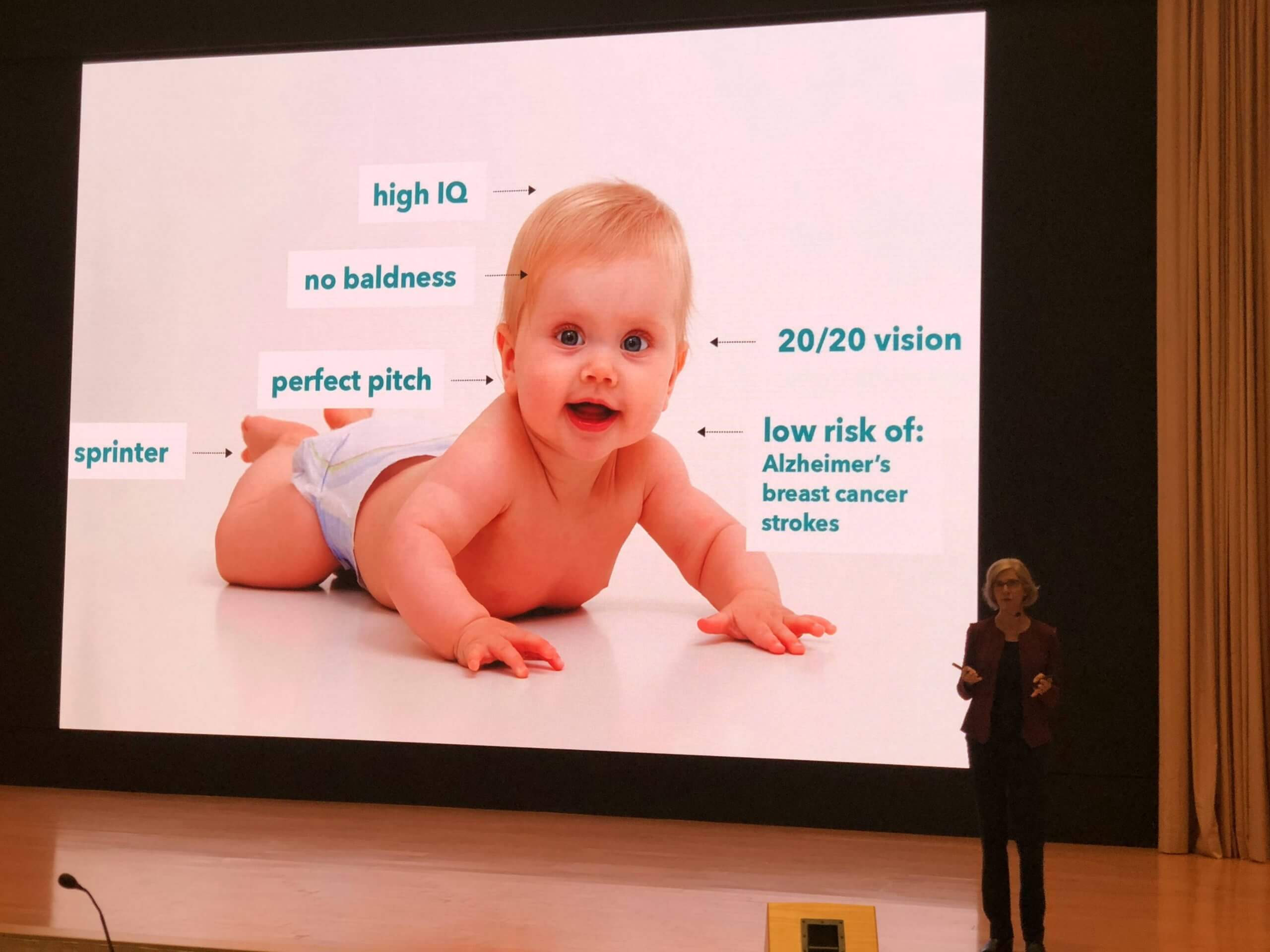The Pioneer of CRISPR Genome Editing ─ Jennifer A. Doudna Visits Taiwan
The revolutionary invention of gene editing raged through the globe in recent years, and received attention that has never been witnessed before. The 13th Sunney Chan Lecture had to the honor to invite the pioneer of CRISPR genome editing, Professor Jennifer A. Doudna, to revisit Taiwan and give a lecture on “CRISPR Biology Guides the Future of Genome Editing” at SINICA, telling the full story of the CRISPR-Cas9 system, from past to future.
The Girl Who Stumbled into the Hawaii Jungles and Later Researched Genomics for Life
Chairman Professor Sunney Chan of the Sunney Chan Lecture introduced Jennifer A. Doudna in the opening remarks. Professor Doudna was raised with an academic upbringing. Due to her father’s job, the whole family moved to Hawaii when she was seven. The island housed a unique ecosystem that ignited a flare in the young Jennifer to learn more about biology. The seed of curiosity was planted. In middle school her father gave her the book “The Double Helix”, written by the Nobel Prize winner James Watson, which inspired her greatly. Deeply fascinated by all the secrets held in the small double helix, Jennifer sought out the life of a researcher in bioscience.

When she was in university the central dogma of molecular biology had just been established, RNA was regarded as a simple messenger for passing genetic information. It wasn’t until later that scientists discovered that not all RNA are directly translated from DNA, and possess many structures that serve additional functions than transcription/ translation. This inspired her to study more about RNA to further understand the molecular mechanism of them.
Just Meant to be, the Entangled Fate with CRISPR
Professor Doudna recalled her first encounter with CRISPR back in 2006, when her colleague in the University of California, Berkeley, Jillian Banfield, first introduced it to her. She was deeply fascinated by this phenomenon that occurred in archaea, but nearly gave up on the high-risk research due to lack of resource and staff. But under the repeat encouragement of Banfield and the addition of post-doc Blade Wiedenheft, she took the risk and delved into the mysterious world of CRISPR.
In 2011, in an international conference, Professor Doudna met French microbiologist Dr. Emmanuelle Charpentier, a lightning of scientific curiosity sparked between the two and they decided to collaborate at once. Dr. Emmanuelle Charpentier confirmed that the bacteria cleaves viral DNA with type II CRISPR system through observing the infection mechanism of Streptococcus pyogenes, and noticed the critical role csn1 gene played in the process (Csn1 had many names, it was until summer, 2011 that the name Cas9 settled) They firmly believed that Cas9 was responsible for destroying the virus during type II CRISPR’s immunoreaction.
The full name of CRISPR is called clustered regularly interspaced short palindromic repeats. It is an adaptive immune system that is presented in all archaea and most bacteria against foreign plasmids and phages. Among all the repetitive DNA sequences in prokaryotes, CRISPR seems to be one of the most common families. The CRISPR-Cas genome editing system is a two part complex structure, with RNA (CRSIPR RNA and tracrRNA) for guidance, and Cas9 protein complex for identifying virus DNA to perform cleavage. It was in 2002, the team lead by Ruud Jansen named the DNA sequence by its abbreviation. The two part structure: CRISPR with the peculiar arranged sequences, and Cas as a nuclease make up the whole DNA genome editing system.
The Holy Grail of Genome Editing, the Research Sensation Brought by CRISPR/Cas9
Professor Doudna explained that in the genome editing system, CRISPR RNA has the length of approximately 20 base pairs, using pairing sequences to identify target DNA then uses Cas9 protein to perform double strand break. Afterwards, genome editing can be achieved by the cell’s repairing mechanism or by given external DNA strands as templates. In 2012, Professor Doudna along with her colleague M. Jinek from Berkeley branch, and Dr. Emmanuelle Charpentier tried to string CRISPR RNA and tracrRNA together into one single stranded RNA (named as sgRNA) to simplify the process of CRISPR/Cas9 production. The results were published in the Journal “Science”. In the following January, the research in human cell editing was published as well. This marks as an important milestone for the development of CRISPR/Cas9, and the beginning of rise of popularity in the research circle.
Professor Doudna pointed out three major traits that make the application of CRISPR-Cas9 system important:
- Can easily control/edit the target DNA sequence
- Can swiftly scan and edit genome
- Can be used in various scenarios, apart from genome editing, it could also be used in transcription control and point mutation detection.
Besides Cas9, her team is still looking for new CRISPR systems. Her team collaborated with Professor Burstein’s team in 2017, and discovered there are indeed other systems operating in microorganisms: CRISPR-CasX and CRISPR-CasY. Experiments showed that CasX can indeed function in the CRISPR system and has the potential to become another genome editing tool.
Professor Doudna also named a few challenges of its use in clinical medication, including the control of delivery efficiency of CRISPR system & DNA templates, how to precisely control DNA repair, and ethnical controversies. However, its use has already been applied to five major fields: Research, Healthcare, Therapeutics, Agriculture, and diagnostics.
In the research field, CRISPR genome editing was used to explore the variation of sizes and colors of butterfly wings. It was also used to understand the difference of the human brain between ancient Neanderthals and modern Homo sapiens from the genomic evolution point of view. Organ transplantations are also a meaningful purpose of CRISPR application. Pigs have similar body sizes to humans and are therefore good sources for organ farming. But the present porcine endogenous retrovirus may infect human cells and insert itself into the human DNA, and create unexpected mutation risks. In recent years some research teams utilized the CRISPR-Cas9 system to reprogram the organs to attenuate the viruses, bringing xenotransplantation closer to reality. In single gene mutation disease treatment, the CRISPR-Cas9 system has achieved great progress in mouse test for the Huntington’s disease, and its model could be tried for other neuro-degenerative diseases like Parkinson’s diseases and Alzheimer’s disease. In agriculture, some teams use the CRISPR-Cas9 system in tomato farming, inserting MADS sequence to the crops and enhancing the production performances, hoping to contribute to the global food insufficiency problem. In clinical diagnosis, Professor Feng Zhang from MIT utilized CRISPR-Cas12a system to develop a way to detect specific gene sequences, labeling specified spots with fluorescent markers. This could be widely applied to SNP detection, early cancer detection, pathogen identification, and drug resistance detection. Because the test kit is light and portable, it is possible to use it for point of care testing in the future.
Science’s Responsibility and Facing Ethnical Controversies
Due to the boundaries of ethnical controversies, genome editing is currently only used in animal/plant experiments or in vitro human cell tests. There is still much to be done before proceeding to test in live humans.
Professor Doudna explained genome editing could be classified into two types: somatic cell editing and germline cell editing. The influence and controversies are distinctively different. Somatic cell editing are used for treating diseases in specific locations, its effect are bound to limited cells or focal tissue. These will not cause systematic changes and will not be passed on to the next generation, thus having fewer controversies. Germline cell editing, on the other hand, performs genome editing on the fertilized embryo, making drastic changes to the whole body, removing pathogenic genes and mutations (ex: BRCA gene mutation) to leave a permanent effect. This leads to the debate of purchasing healthy babies.

Professor Doudna said the technology to customized edit healthy babies has yet to come, because many physiology traits are influenced by multiple genes, and the relationship of traits and sequence hasn’t been clearly defined. But currently, the technology can be applied to help those that suffer from inheritable diseases. Novel technology advances at an extremely fast pace, without cautious development technology can easily become a double edge blade. Professor Jennifer A. Doudna expects CRISPR genome editing could be put to good use, and benefit the human race in the future.
©www.geneonline.com All rights reserved. Collaborate with us: service@geneonlineasia.com









